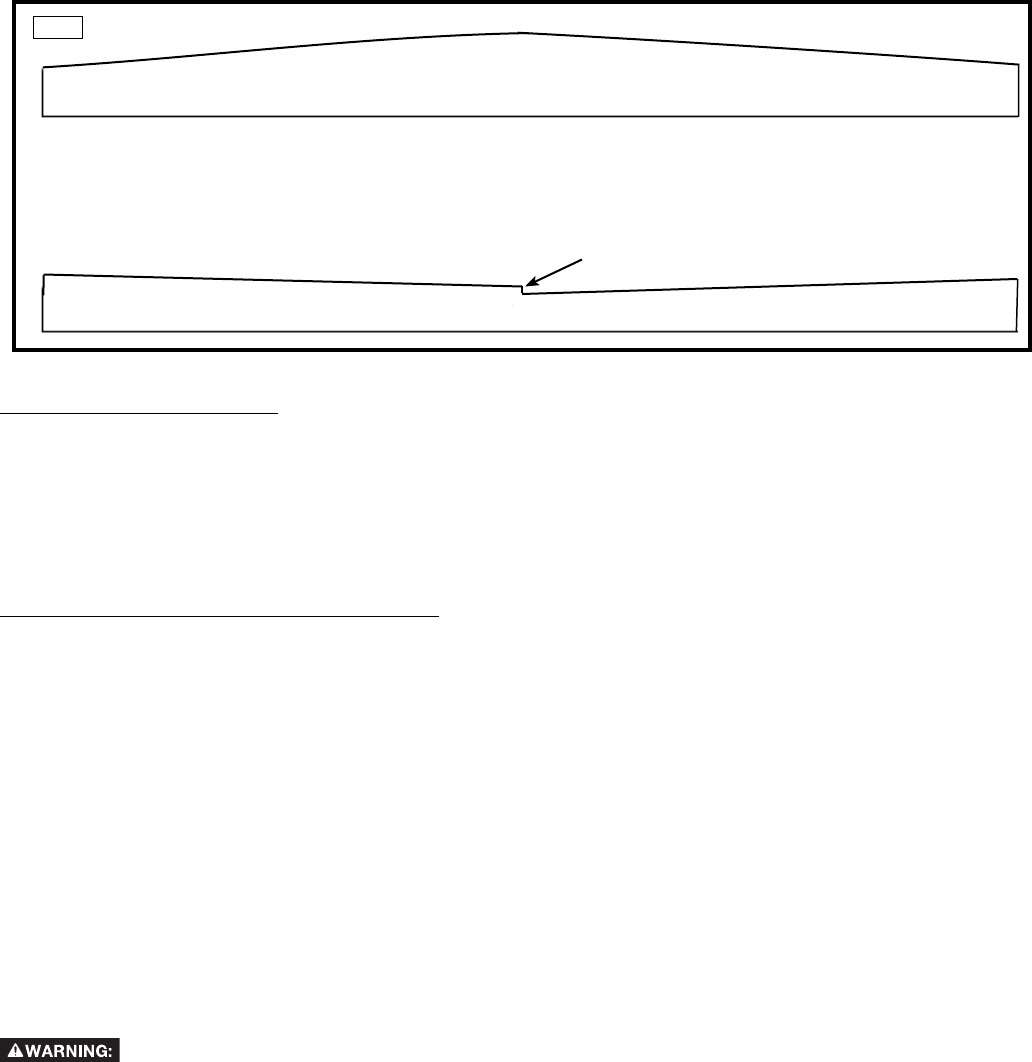
16
HOW DO I GET STARTED?
1. To gain experience, use scrap wood. Start with stock that is 2' (61 cm) to 4' (122 cm) long. These will be easier to
control and to feed. Use different wood types and different widths.
2. To see how the sander works, measure the thickness of your stock. Set the table height to that thickness and then
lower it 1/4 turn. Turn the drum switch “ON” and then turn the table feed belt speed to 50%. If the drum does not
contact the stock, raise the table height slowly while feeding the stock through, until you see that it is sanding.
Let the board feed through. Turn the handle 1/4 turn to raise the table height and make another pass. Increase the
conveyor speed as you gain confidence.
HOW TO INCREASE SANDING BELT LIFE:
1. When the belt becomes dull, remove and reverse the belt.
2. When the belt becomes loaded with build up, soak the belt in paint thinner or mineral spirits for 20 minutes to one
hour to loosen the build up. Then use a standard hand held wire brush and clean the belt. Allow the belt to dry
completely before using.
3. When sanding boards under 9" (23 cm) wide, place the board through the sander at a slight angle (60°). This will
spread the sanding action out over a larger area of the drum rather than in one area. Then make the finish pass
with the grain.
4. When sanding narrow boards, run them through at different locations over the entire width of the drum.
Delta offers a full line of sanding belts, in all grit sizes, in both bulk rolls and pre-cut strips.
TABLE MOVEMENT TROUBLESHOOTING GUIDE
If your table does not adjust properly, or if the adjustment is tight, or if the timing belt is jumping teeth, use the following
information to realign the table mechanism and adjust the belt tension.
To reduce the risk of injury, turn unit off and disconnect it from power source before installing and
removing accessories, before adjusting or when making repairs. An accidental start-up can cause injury.
The Drum Sander feed table should adjust up or down with 35 inch/lbs. of torque or less. If more torque is required,
make an adjustment. If you hear a clicking or knocking noise as you turn the handwheel, the timing belt is probably
jumping teeth. Listed are four areas that affect the table movement. Start at the top of this trouble-shooting guide. If
the table movement becomes free, you will not need the remaining steps.
HOW DO I SAND BOARDS WIDER THAN 18" (457 mm)?
IMPORTANT: If the drum is not parallel to the table a step or line will result. Set the open side a few thousandths of an
inch more open to allow sanding a crown rather than a groove. (See Fig. 37)
Sanding wide boards requires two separate passes. Set the table height to the board maximum thickness, and
make a pass. Then, without changing the table height, rotate the board 180° and sand the other half of the
board. Adjust the table height and repeat the two sanding passes. Continue until you are satisfied with the result.
NOTE: Provide support for the part of the board that is not on the table during each pass.
Example of exaggerated results if open end of drum is higher.
Example of exaggerated results if open end of drum is lower.
STEP
Fig. 37
